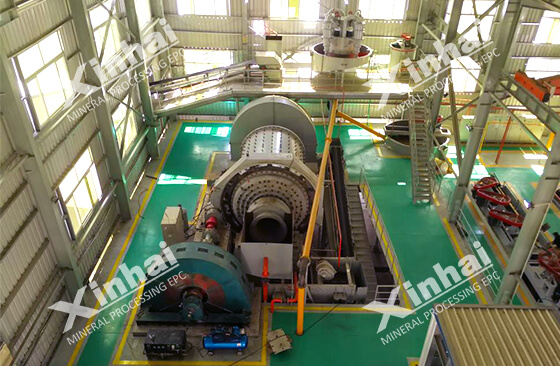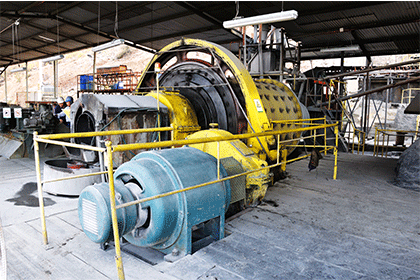How Much does it Cost to Build a Copper Processing Plant?
 Shirley
Shirley
 Feb 14, 2024
Feb 14, 2024
 4390
4390
If you want to know more details about equipment, solutions, etc, please click the button below for free consultation, or leave your requirements!

Building a copper processing plant is a significant investment that requires careful financial planning and cost estimation. Generally speaking, the cost of building a medium-sized copper concentrator usually ranges from millions to hundreds of millions of dollars. The cost of building a large processing plant may be higher. Numerous factors influence the overall cost, including plant size, process complexity, equipment selection, site conditions, and regulatory requirements. This comprehensive guide aims to provide valuable insights into the cost considerations involved in building a copper processing plant, helping industry professionals make informed decisions and ensure the financial viability of the project.
01Pre-Feasibility Studies
BackBefore initiating the construction of a copper processing plant, conducting pre-feasibility studies is crucial. These studies involve assessing the availability and quality of copper deposits, analyzing market demand and competition, evaluating project risks, and estimating the financial viability of the investment.
02Plant Design and Engineering
Backa. Process Design: Engage experienced engineers and metallurgists to design the copper processing plant layout, considering factors such as ore characteristics, desired production capacity, and end-product specifications. The process design influences equipment selection, material flows, and overall plant efficiency. (Click to know how to extract copper from its ore)
b. Engineering and Construction: Collaborate with engineering firms to develop detailed engineering plans, procurement strategies, and construction schedules. The engineering phase includes civil, structural, mechanical, and electrical design, as well as environmental and safety considerations.

03Equipment and Machinery
Backa. Crushing and Grinding Equipment: Copper ores are typically crushed and ground to facilitate further processing. The cost of crushers, grinding mills, and associated equipment depends on factors such as capacity, efficiency, and the desired particle size.
b. Flotation Equipment: Flotation is a commonly used method to separate copper minerals from the gangue. The cost of flotation cells, agitators, pumps, and reagent dosing systems should be considered.
c. Thickening and Filtering Equipment: Thickening and filtering processes are employed to separate copper concentrates from water and impurities. Costs associated with thickeners, filters, and related infrastructure should be included.
d. Smelting and Refining Equipment (Optional): If the plant includes smelting and refining operations to produce refined copper or copper cathodes, the cost of smelters, converters, anode furnaces, electrolytic cells, and associated equipment should be factored into the overall cost.

04Infrastructure and Utilities
Backa. Site Preparation: Costs associated with land acquisition, site clearing, and leveling should be considered.
b. Buildings and Structures: Construction of processing facilities, administrative buildings, warehouses, and laboratories should be budgeted. The complexity and size of these structures impact costs.
c. Utilities: Provision of electricity, water supply, and wastewater treatment systems is essential. Costs depend on the plant's size, location, and accessibility to infrastructure networks.

05Labor and Operational Costs
Backa. Skilled Workforce: Estimate labor costs, including skilled operators, technicians, engineers, and managerial staff required for plant operations.
b. Maintenance and Operation: Consider costs associated with routine maintenance, spare parts, consumables, and ongoing operational expenses, including utilities, reagents, and waste management.
06Regulatory and Environmental Compliance
BackFactor in costs related to environmental impact assessments, permits, licenses, and compliance with local regulations and best practices. Implementing sustainable practices may involve additional expenses but can lead to long-term cost savings and improved public perception.
07Contingency and Financial Analysis
BackInclude a contingency budget to account for unforeseen expenses, market fluctuations, and project risks. Conduct a comprehensive financial analysis, considering capital costs, operating costs, revenue projections, and cash flow estimations. Seek expert advice to ensure accurate financial planning and risk management.
08To Wrap Up
BackBuilding a copper processing plant requires meticulous planning and accurate cost estimation. From pre-feasibility studies to plant design, equipment selection, infrastructure development, labor costs, regulatory compliance, and financial analysis, each aspect plays a crucial role in determining the overall cost of the project. By considering these factors and conducting thorough assessments, industry professionals can make informed decisions, optimize resource allocation, and ensure the successful construction and operation of a copper processing plant while maximizing return on investment.
 +86 18716000713
+86 18716000713 xlyin@xinhaimining.net
xlyin@xinhaimining.net




 Message
Message Chat Now
Chat Now


















